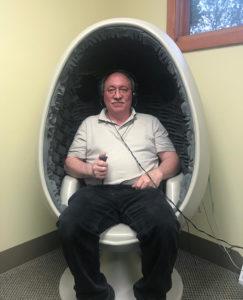- The Impact of Hearing Aids on Veterans’ Lives - February 15, 2024
- Hearing Health: A New Year’s Resolution for a Vibrant Life - January 16, 2024
- Unraveling Misconceptions About Hearing Loss - December 12, 2023
Do you remember when you had your hearing tested in grade school or at work? In school you had to sit down in a quiet area—usually the library and had to listen to tones being played through an audiometer. When you heard the tone you had to raise your hand. These screening were often performed by a volunteering parent of a school noise. If you worked in a noisy environment OSHA required annual hearing tests. These may have been performed in a semi-truck with sound proof rooms, or in a quiet area of the plant. You listened to tones and probably pushed a button that would record the findings. Both of these were screenings. If you could not hear tones below a certain level it was then it was recommended that you see a hearing professional for physician further evaluation.
Unfortunately, these screenings are not very accurate as more often than not the ears weren’t checked for cerumen (ear wax) and the environmental noises could easily cover up the tones you were trying to hear. Therefore the hearing screening results reported were worse than what the hearing actually was. This created unwarranted fear for the parents and for the factory workers.
At Welsch Hearing Aid Company we offer FREE hearing screenings to anyone. How are these screenings better than those at school or work? We do a video-otoscopic ear exam before we do the screening. If the ear has impacted ear wax, we send them to get their ears cleaned before we perform the hearing screening. The screenings are done by licensed hearing care providers, in a very quiet room with a Starkey Egg Chair with Sound Proofing. One listens to tones through the use of insert ear and pushes the button when the tones are 
If no hearing loss is present and the patient still has issues hearing certain things like TV, we would recommend a TV Listening Device, or an amplified phone if hearing on the phone is a problem.
If a hearing screening finds that a hearing loss is present then a full hearing test is recommended. In addition to what was already done, a pure tone bone conduction test must be performed. By placing a vibrating device behind the ear in the mastoid area, you can actually hear the vibrations. This test helps determine whether the hearing loss is due to nerve damage or if there is a physical component to the hearing loss. This is possible when the results indicate the bone scores to be significantly better than the pure tone air scores. If this is the case a referral to an Ear, Nose, and Throat Specialist is in order, for further evaluation. Speech understanding tests are also performed as part of a full hearing test.
